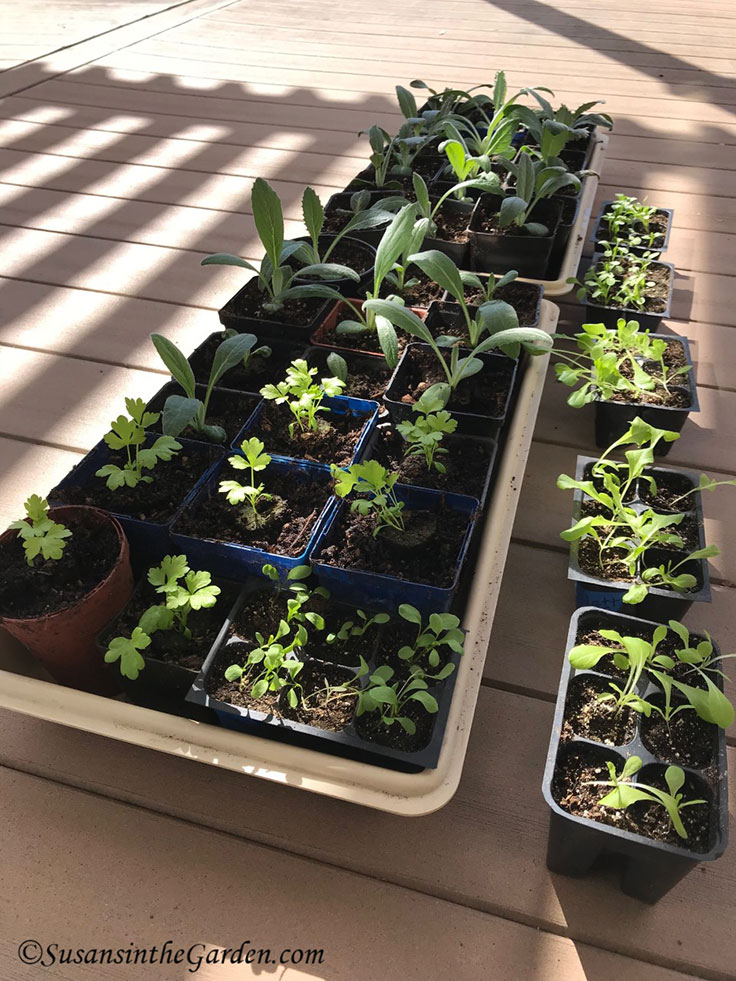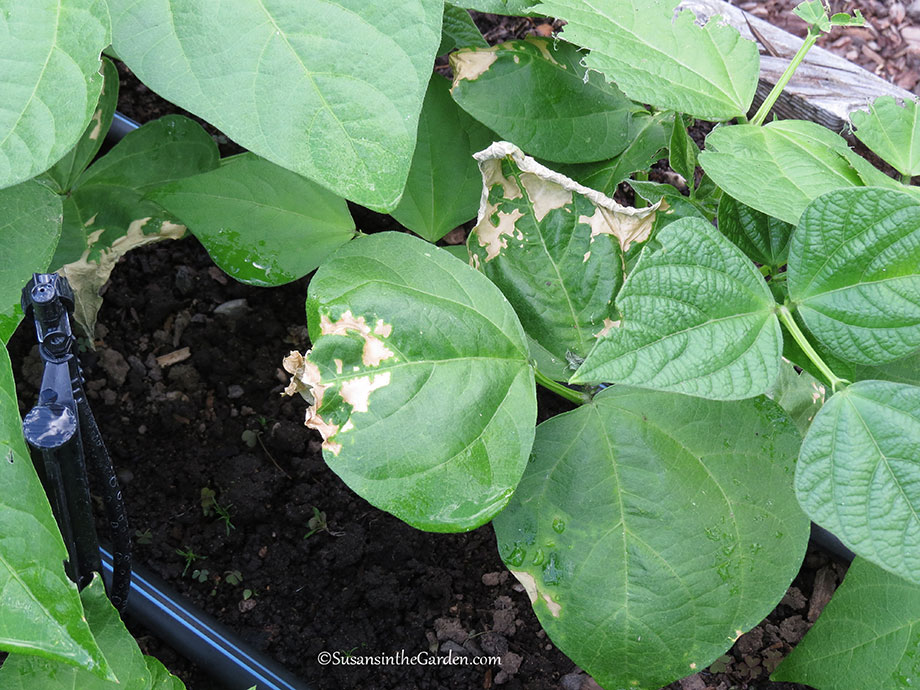Column: The Importance of Hardening Off Seedlings

Last week, I wrote about the correct timing of starting tomato plants from seed. For this week’s garden column, I discuss why hardening-off seedlings is so important.
If you’re not familiar with the concept of hardening-off, this applies to any plants you’ve started indoors from seed. It’s really important to acclimate them to the intensity of sunlight before transplanting them in your garden. You’ll learn how toughen up your little seedlings. I even provide an alternate method in case you work full-time. The standard method can be challenging if you’re not home much.
Column:
by Susan Mulvihill
Seed-starting is one of my favorite gardening activities. It’s a great skill to learn. You can grow varieties that are hard to find in garden centers and it’s quite economical.
We gardeners feel pretty proud of ourselves – and rightly so – when our seed-starting skills result in some nice-looking seedlings. Before we can transplant them out into the garden, there is one final step that is absolutely crucial to your plants’ success. That is the hardening-off process.
It doesn’t matter whether you start your seedlings under grow lights or on a sunny windowsill. The fact is that neither of those sources of light are as intense as direct sunlight. If you transplant your seedlings directly into the garden rather than helping them slowly acclimate to the intensity of the sun, they will look like the plants in the photo below.
Those crispy white patches on the leaves are a plant’s version of sunburn, which is also called leaf scorch. I don’t recall how I forgot to harden off those seedlings but they obviously weren’t ready to deal with bright sunshine.
If the sunburn is mild, the plants will recover after this setback. If it’s severe, the plants likely will die because this interferes with the leaves’ ability to conduct photosynthesis. That would be a waste of seeds as well as your time and effort, right?
The standard process for hardening-off seedlings
The hardening-off process should be followed for about 7 to 10 days, depending on how much time you have. Here’s how it works:
On the first day, move the seedlings outdoors for one hour in filtered sunlight, then bring them back inside. On the second day, increase the time to two hours.
On the third day, the plants get to stay outdoors for 3 hours. But you can slowly start them edging into a bit more sunlight. Each subsequent day, add an hour to the seedlings’ outdoor excursion. At the same time, continue moving them into brighter light.
At the end of that time, the seedlings will be ready to go into the garden. That is, if the timing is right for transplanting them into the garden.
Alternate process for those who work
What if you work full-time? That can make this process more challenging. Fortunately, there are some alternatives. I recommend starting the process on your days off, following the above routine. After that, choose a sheltered area gets dappled sunlight, set them outside for the day and bring them back inside when you get home.
Be sure to keep an eye on the weather forecast and protect the seedlings with lightweight shade cloth (about 30% density) as you start moving them into a sunnier location. If you have some lightweight floating row cover on hand, that also will provide some protection. When the weather is overcast, you can leave the seedlings out for a longer period of time. Slowly but surely, the leaves will become a bit thicker and more able to handle full sun.
When you are calculating the date that you want to transplant the seedlings into the garden, you should factor in the time it takes for the hardening-off process.
For example, if you’ve started pole bean or pea seedlings indoors, you’ll want to plant them outside before they start getting tangled together while developing their vines. That can be a nightmare and risky to untangle since tender new vines can break easily. Because of this, I’d recommend beginning the hardening-off process as soon as the majority of those types of seedlings have germinated.


